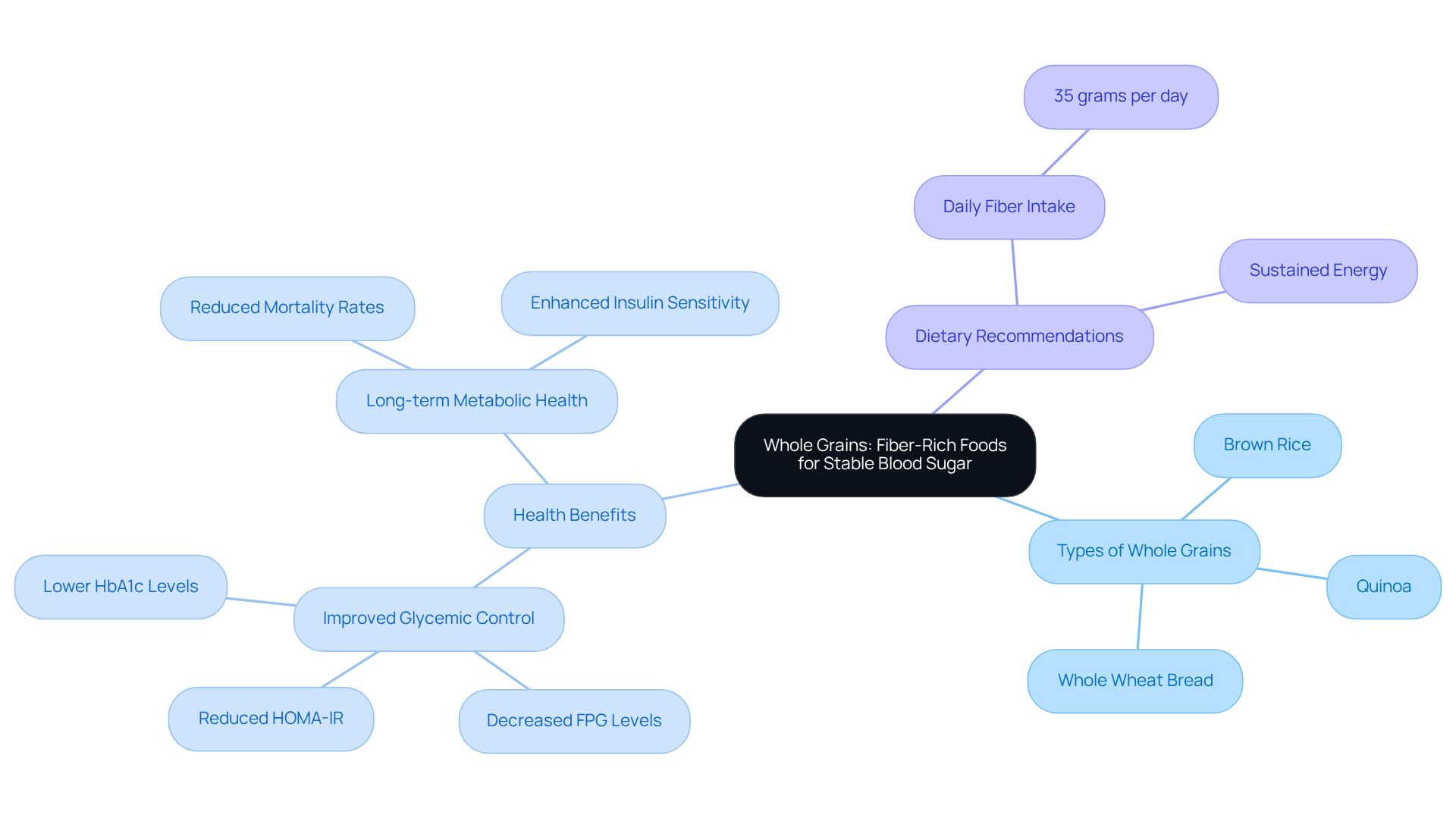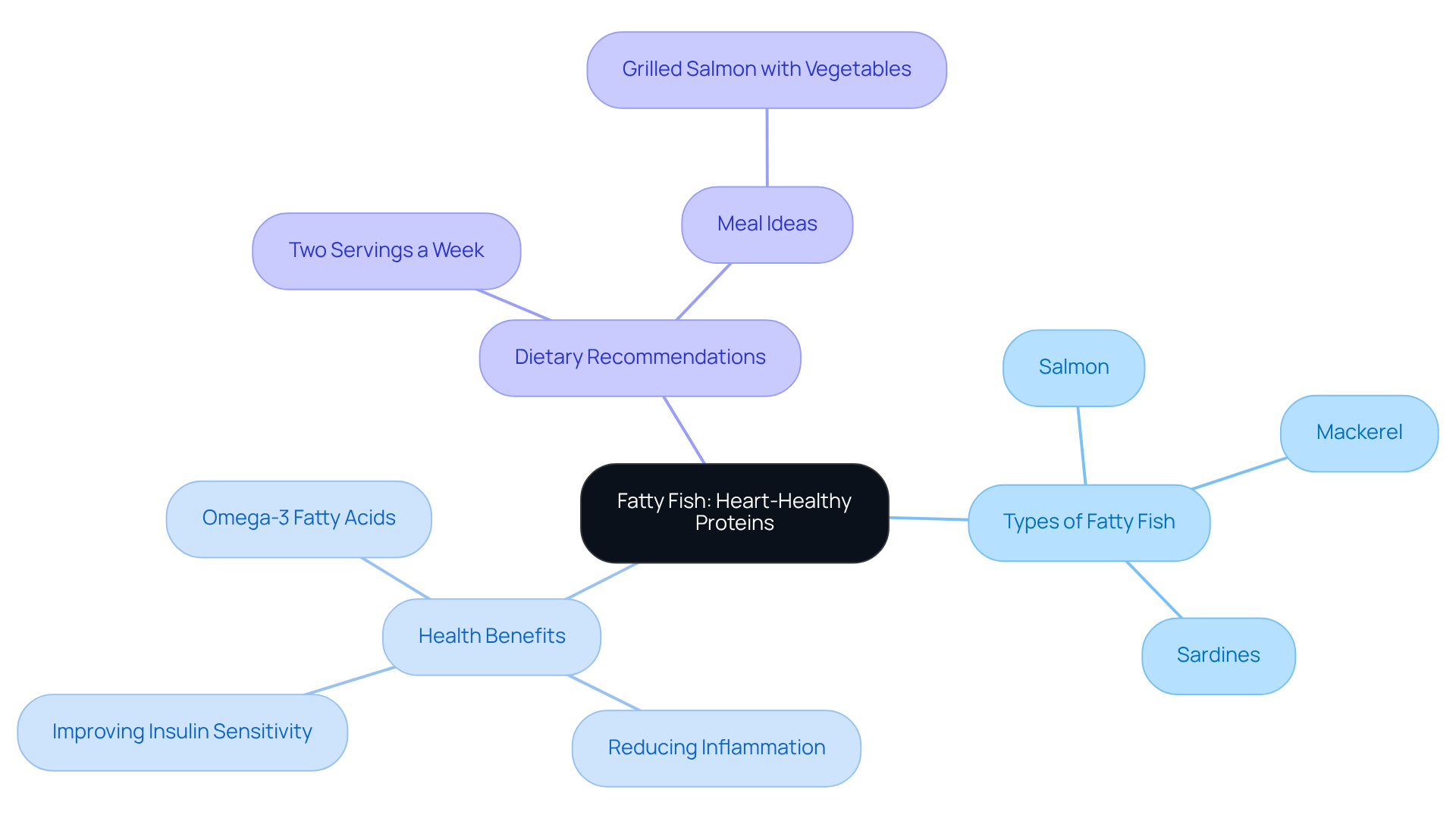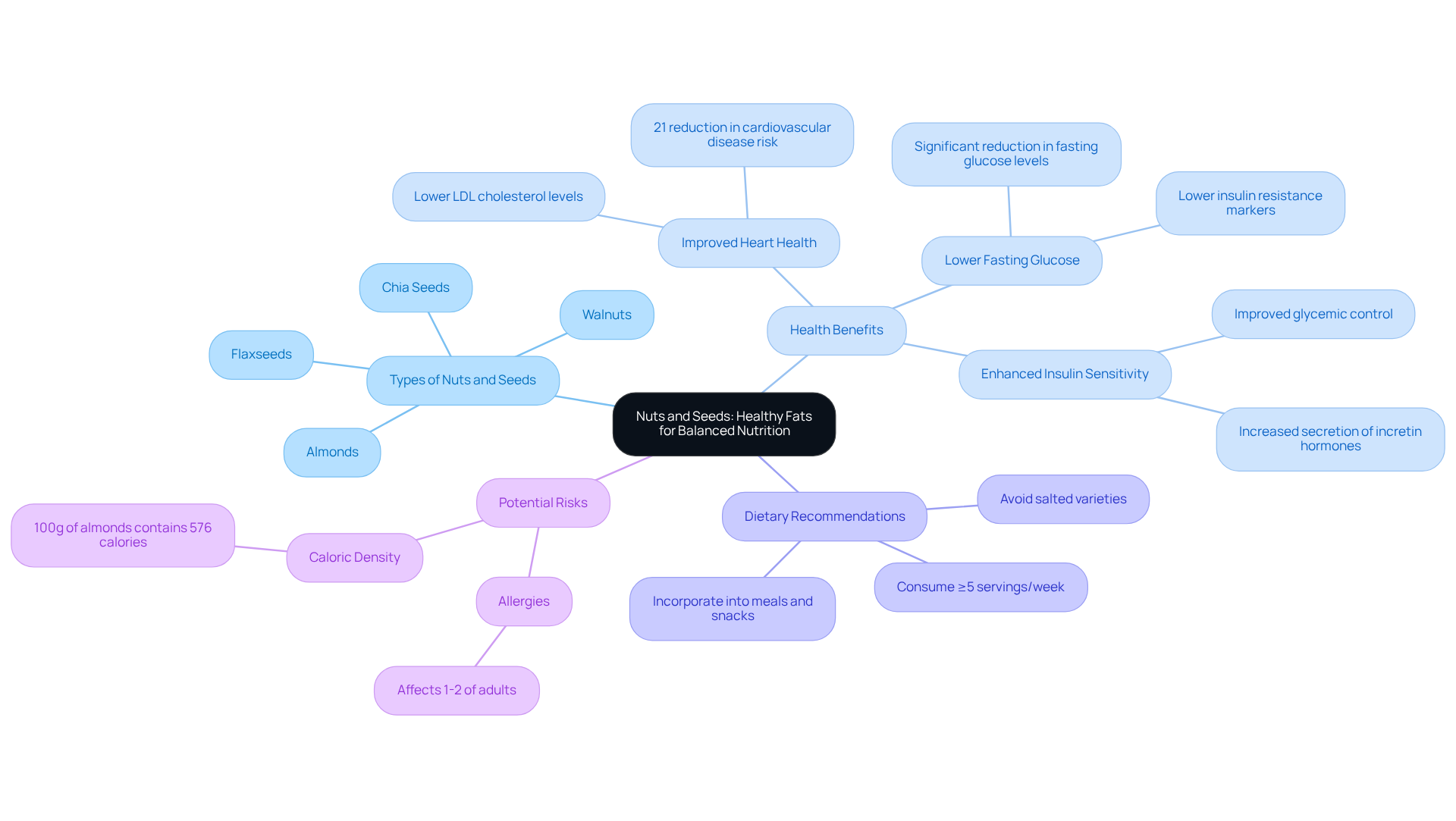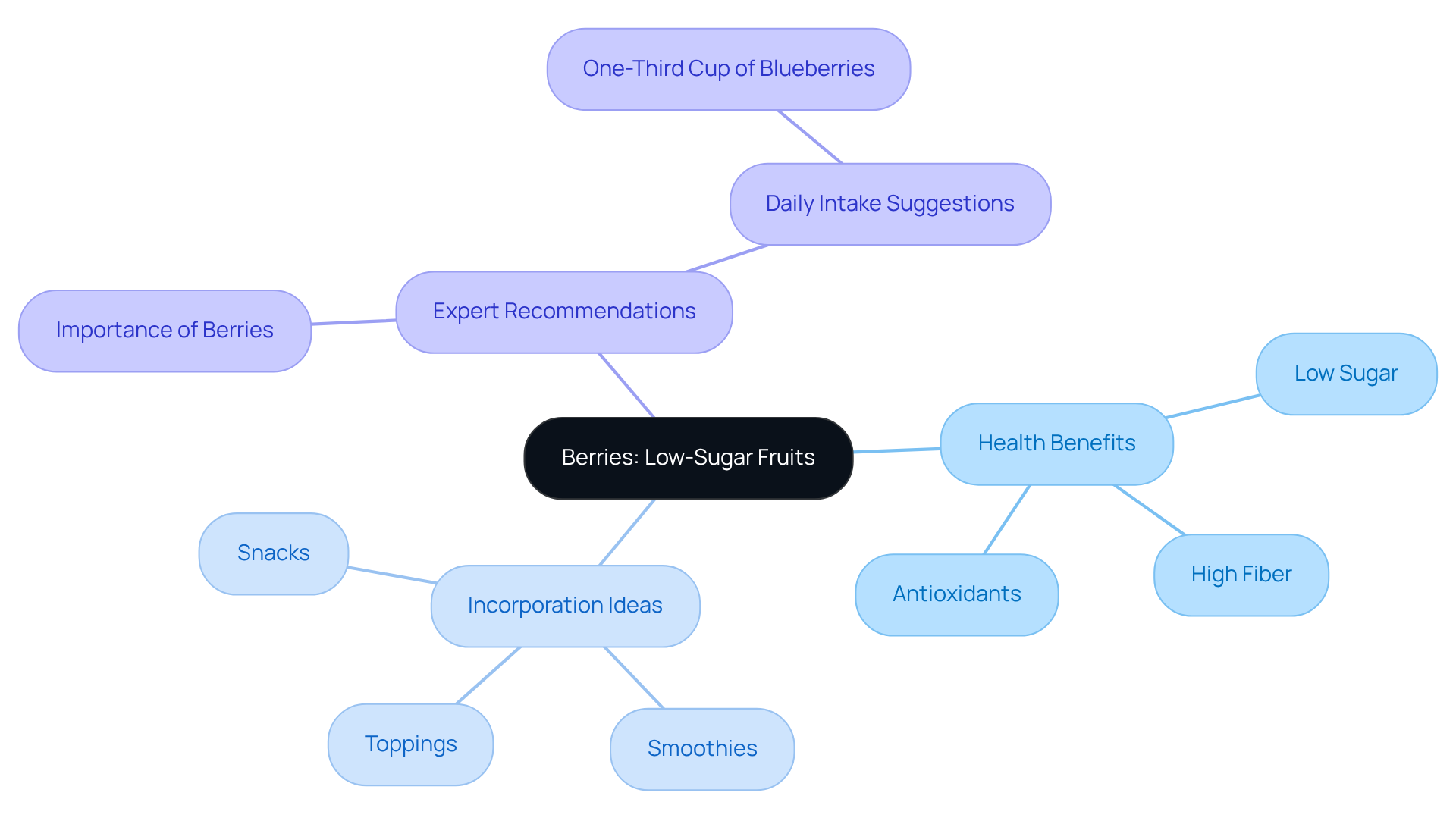Overview
If you're looking to improve your health while managing Type 2 diabetes, consider incorporating essential foods into your diet. These include:
- Leafy greens
- Whole grains
- Lean proteins
- Healthy fats
- Berries
- Legumes
- Greek yogurt
- Sweet potatoes
- Cinnamon
These foods not only help regulate blood glucose levels but also contribute to your overall well-being.
It's important to understand how these foods work for you. They are rich in fiber, have a low glycemic index, and contain compounds that enhance insulin sensitivity. By choosing these nutritious options, you're taking a positive step towards managing your condition.
Remember, you're not alone in this journey. Many have found success by making thoughtful dietary choices. Share your experiences with others, and seek support when needed. Together, we can navigate this path to better health.
Introduction
In the realm of managing Type 2 Diabetes, dietary choices play a pivotal role in maintaining health and well-being. It's understandable to feel overwhelmed by the many options available. With the increasing prevalence of this condition, understanding which foods can effectively support blood sugar control is essential.
This article explores ten vital foods that not only nourish the body but also empower you in your journey to manage diabetes more effectively. Remember, you're not alone in this journey; we are here to support you every step of the way.
However, amidst the myriad of options, how can you determine which foods truly make a difference in your health outcomes?
T2DSolutions: Comprehensive Resource for Type 2 Diabetes Management
At T2DSolutions, we are dedicated to empowering you with the essential knowledge and resources needed to manage Type 2 Diabetes effectively. Our platform offers a comprehensive suite of educational resources, ranging from basic management strategies to advanced treatment options. We highlight dietary plans, exercise routines, and the latest medical research to clarify the complexities of managing this condition.
It's understandable to feel overwhelmed, but by collaborating with experts and advocacy groups, we ensure that you receive accurate and relevant information tailored to your unique needs. This collaborative approach fosters a supportive community, enhancing your overall experience and promoting successful management strategies, especially for those newly diagnosed.
To assist you further in managing Type 2 Diabetes, consider incorporating these essential foods into your diet:
- Leafy greens (e.g., spinach, kale)
- Whole grains (e.g., quinoa, brown rice)
- Lean proteins (e.g., chicken, fish)
- Healthy fats (e.g., avocados, nuts)
- Berries (e.g., blueberries, strawberries)
- Legumes (e.g., lentils, chickpeas)
- Non-starchy vegetables (e.g., broccoli, bell peppers)
- Greek yogurt
- Sweet potatoes
- Cinnamon
These foods can help regulate your blood glucose levels and support your overall health. Remember, you're not alone in this journey; we are here to support you every step of the way.

Leafy Greens: Nutrient-Dense Choices for Blood Sugar Control
Leafy greens, such as spinach, kale, and Swiss chard, are not just nutritional powerhouses; they are also a wonderful choice for those looking to enhance their health. Rich in vitamins, minerals, and antioxidants, these greens remain low in carbohydrates. Their high fiber content is particularly beneficial for regulating blood glucose levels, which is why they are considered some of the best diabetes type 2 foods to eat for individuals managing the condition. Research shows that eating plans abundant in fiber and green leafy vegetables can significantly lower the risk of developing insulin resistance and improve glycaemic control. For instance, a study revealed that increasing raw vegetable intake led to notable improvements in glycaemic control among participants with Type 2 Diabetes over a 12-week intervention.
Nutritionists stress the importance of including these greens, which are considered diabetes type 2 foods to eat, in your daily meals, as they can elevate your overall nutrition without causing spikes in blood sugar levels. It's understandable to feel overwhelmed, but there are simple ways to make this easier. Consider trying new leafy greens each week or adding them to smoothies, salads, and stir-fries. Aim for at least four servings of vegetables daily to reap the protective benefits of these nutrient-dense foods. Furthermore, incorporating leafy vegetables is important as diabetes type 2 foods to eat to help maintain a balanced diet, which is essential for effective health management. You might find that experimenting with different recipes or using creative themes can make these healthy options more appealing and enjoyable for you and your family.
You're not alone in this journey. Simple strategies can foster better eating habits while making the process enjoyable. Remember, every small step counts, and we are here to support you every step of the way.

Whole Grains: Fiber-Rich Foods for Stable Blood Sugar
At T2DSolutions, we genuinely care about providing valuable resources for managing Type 2 conditions. Whole grains, such as brown rice, quinoa, and whole wheat bread, are considered excellent diabetes type 2 foods to eat as they are outstanding sources of dietary fiber, which plays a vital role in managing blood sugar levels. Research shows that a daily intake of 35 grams of fiber can significantly reduce mortality rates among individuals with diabetes. This highlights the importance of including fiber-rich foods in your diet.
It's understandable to feel overwhelmed, but fiber helps slow the absorption of glucose into the bloodstream, effectively preventing spikes in blood glucose levels. Studies have shown that consuming whole grains leads to notable decreases in fasting plasma glucose (FPG), Homeostasis Model Assessment of Insulin Resistance (HOMA-IR), and HbA1c levels, indicating improved glycemic control. Nutritionists emphasize that incorporating whole grains into your meals not only enhances satiety but also provides sustained energy throughout the day. This makes them one of the best diabetes type 2 foods to eat for those managing Type 2 Diabetes.
The benefits of whole grains extend beyond immediate blood sugar control; they also contribute to long-term metabolic health. This reinforces the need for individuals to prioritize diabetes type 2 foods to eat in their daily nutrition. Remember, you're not alone in this journey. For more tips on incorporating whole grains into your diet, explore the resources available at T2DSolutions. With the global prevalence of diabetes expected to reach 784 million by 2045, making informed dietary choices is more critical than ever. We are here to support you every step of the way.

Fatty Fish: Heart-Healthy Proteins for Diabetes Management
Fatty fish, such as salmon, mackerel, and sardines, are not just delicious; they are also rich in omega-3 fatty acids. These essential nutrients, which are among diabetes type 2 foods to eat, play a crucial role in reducing inflammation and promoting heart health, especially for those managing diabetes. By incorporating these fish into your diet regularly, you can significantly enhance your insulin sensitivity. Research suggests that individuals with diabetes type 2 foods to eat, including at least two servings of fatty fish each week, may see improved cardiovascular outcomes and better glycemic control.
Incorporating these heart-healthy proteins into your meals not only supports your overall well-being but also helps mitigate the risk associated with diabetes type 2 foods to eat. As you explore T2DSolutions, your new resource hub for health education, consider adding fatty fish to your meals. For example, grilling salmon with a side of vegetables can make for a nutritious and satisfying dinner.
This comprehensive approach to managing blood sugar levels emphasizes that incorporating diabetes type 2 foods to eat, including increasing your omega-3 intake, is vital for effective care. Remember, you are not alone in this journey. We are here to support you every step of the way.

Legumes: Protein-Packed Foods for Sustained Energy
Legumes, such as lentils, chickpeas, and black beans, are wonderful sources of protein and fiber, providing you with sustained energy. They also have a low glycemic index, which means they can help keep your blood sugar levels stable. By adding legumes to your salads, soups, or as a side dish, you not only enhance your meals but also include diabetes type 2 foods to eat that support your blood sugar control. It's understandable to want to make informed choices as you navigate this journey.
As T2DSolutions introduces itself as a new resource center for managing blood sugar, consider exploring additional tips and recipes for diabetes type 2 foods to eat and incorporate these nutritious options into your daily meals. You're not alone in this journey; we are here to support you every step of the way. For a simple idea, try adding cooked lentils to your favorite salad for an extra protein boost! This small change can make a big difference in how you feel.

Nuts and Seeds: Healthy Fats for Balanced Nutrition
Nuts and seeds, such as almonds, walnuts, chia seeds, and flaxseeds, are not just tasty additions to your meals; they are rich in healthy fats, protein, and fiber, making them excellent diabetes type 2 foods to eat for a healthy diet. These nutrients promote satiety, helping to curb those tempting unhealthy snacks, while also contributing to improved heart health—something crucial for anyone managing diabetes. Research shows that regular nut consumption, defined as at least five servings per week, is associated with a 21% reduction in cardiovascular disease risk and a significant decrease in diabetes-related mortality.
At T2DSolutions, we understand how overwhelming a new diagnosis can be, and we aim to provide valuable resources for newly diagnosed patients. Our dietary guidance emphasizes the importance of incorporating a variety of nuts and seeds into your meals. The healthy fats found in nuts, particularly unsaturated fats, play a vital role in enhancing insulin sensitivity and regulating blood sugar levels. For instance, a systematic review highlighted that adding nuts to meals can lower postprandial glycemia, thereby improving overall glycemic control. Additionally, studies have shown that individuals consuming higher amounts of nuts exhibit lower fasting glucose levels and improved markers of insulin resistance.
Nutritionists emphasize the significance of including a range of diabetes type 2 foods to eat, such as nuts and seeds, in your meals. As one expert wisely noted, "The best advice is to incorporate a generous amount of nuts into your diet, ensuring you get a variety." This variety not only enhances the nutritional quality of your meals but also promotes cardiovascular well-being, which is especially crucial for those looking for diabetes type 2 foods to eat. Remember, up to 80% of individuals with such conditions may face heart-related problems.
However, it's important to be aware of potential risks associated with nut consumption, such as allergies, which can affect a small percentage of the population. Incorporating a small handful of nuts or a sprinkle of seeds into your meals can significantly enhance their nutritional value. Whether you add diabetes type 2 foods to eat to salads, mix them into yogurt, or enjoy them as a snack, these nutrient-rich options offer a delicious way to support your well-being while managing diabetes. You're not alone in this journey; we are here to support you every step of the way.

Berries: Low-Sugar Fruits Packed with Antioxidants
For those managing Type 2 Diabetes, berries like strawberries, blueberries, and raspberries are excellent diabetes type 2 foods to eat. Not only are they low in sugar, but they are also high in fiber, which is beneficial for your health. Their rich antioxidant content, especially anthocyanins, helps reduce inflammation and supports overall wellness. It’s encouraging to note that recent studies show a pooled hazard ratio of 0.74 for blueberries, indicating their protective effects against health risks when consumed in three servings weekly.
Incorporating berries into your daily routine can be both simple and enjoyable. Consider the following ideas:
- Think of them as a satisfying snack
- Blend them into smoothies
- Sprinkle them on yogurt or oatmeal for a delicious touch
Nutritionists, including experts like Frank B Hu, stress the importance of these low-sugar fruits as diabetes type 2 foods to eat, since fruit consumption is linked to a lower risk of diabetes. By choosing berries, you not only indulge your sweet cravings but also take a positive step on your wellness journey.
Aim for a daily intake of one-third cup of blueberries to fully enjoy their benefits. Remember, you're not alone in this journey; we are here to support you every step of the way. How might you include more berries in your diet today?

Greek Yogurt: Protein-Rich Dairy for Gut Health
Greek yogurt is truly a powerhouse of protein and probiotics, both essential for supporting gut health and enhancing digestion. With about 19 grams of protein per cup, it helps you feel full, making it easier to manage hunger and portion sizes. If you're watching your intake, one cup of 2% fat Greek yogurt contains just 150 calories and 9 grams of carbohydrates, making it one of the recommended diabetes type 2 foods to eat for those managing type 2 conditions.
The probiotics found in Greek yogurt are particularly significant among diabetes type 2 foods to eat; they may improve insulin sensitivity and help regulate blood glucose levels. It's understandable to feel concerned about managing your health, but studies indicate that regular consumption of yogurt with live cultures can lower the risk of developing type 2 conditions by up to 14%. To maximize these health benefits, consider choosing plain, unsweetened Greek yogurt to avoid unnecessary added sugars.
Incorporating Greek yogurt into a balanced diet is one of the diabetes type 2 foods to eat that can be a strategic option for managing blood sugar levels. For added taste and nutrition, consider including diabetes type 2 foods to eat such as berries or nuts, which are rich in antioxidants and fiber, further supporting blood glucose management. Remember, you're not alone in this journey; small, mindful choices can lead to significant improvements in your health.

Sweet Potatoes: Nutrient-Rich Carbohydrates for Energy
Sweet potatoes are a wonderful, nutrient-dense carbohydrate option, rich in vitamins, minerals, and fiber. They are an excellent choice for anyone looking to manage their blood sugar levels through diabetes type 2 foods to eat. With a glycemic index ranging from 44 to 94, depending on how they are cooked, sweet potatoes have a significantly lower impact on blood glucose compared to regular potatoes. This characteristic is vital for those facing blood glucose challenges, as diabetes type 2 foods to eat, which have a low glycemic index, help maintain stable blood sugar levels. For example, boiling sweet potatoes can reduce their glycemic index to as low as 41, which makes them one of the diabetes type 2 foods to eat in your meal plan.
At T2DSolutions, we are dedicated to offering valuable resources for diabetes management, including helpful dietary tips and community support. You can enjoy sweet potatoes in a variety of delicious ways—baked, mashed, or as fries—while benefiting from their ability to provide sustained energy without causing rapid spikes in blood sugar. Their high fiber content not only supports digestion but also promotes a feeling of fullness, which can be beneficial for weight management. Nutritionists have observed that including diabetes type 2 foods to eat, such as low glycemic index carbohydrates like sweet potatoes, in your meals can lead to improved overall health outcomes.
By incorporating these versatile tubers into your diet, you can support your journey toward effective blood sugar control and include diabetes type 2 foods to eat for enhanced well-being. Additionally, registered dietitian Barbie Cervoni highlights that sweet potatoes are rich in antioxidants, which may help protect against chronic diseases, further enhancing their role in a healthy diet. Remember, you're not alone in this journey. For more tips and resources on managing blood sugar levels, we invite you to visit T2DSolutions.

Cinnamon: A Spice for Enhanced Insulin Sensitivity
Cinnamon: A Spice for Enhanced Insulin Sensitivity
At T2DSolutions, we understand the challenges that come with managing Type 2 diabetes, and we are here to support you every step of the way. One simple yet effective dietary addition you might consider is cinnamon. This versatile spice is renowned for its potential to enhance insulin sensitivity and reduce blood glucose levels. Recent studies suggest that merely half a teaspoon of cinnamon each day can notably lower fasting blood glucose levels, making it one of the important diabetes type 2 foods to eat for a diabetes-friendly diet. The active ingredient in cinnamon, known as MHCP, mimics insulin and activates its receptor, which may help both diabetics and those with undiagnosed blood sugar issues.
Incorporating cinnamon into your meals is not only easy but also delicious. You might think about adding it to your oatmeal, yogurt, or smoothies to enhance taste while gaining nutritional advantages. Additionally, cinnamon can be used in savory dishes, enhancing the flavor of roasted vegetables or stews. Its antioxidant characteristics also contribute to overall well-being, potentially reducing the risk of complications related to blood sugar conditions, such as heart disease and stroke.
Nutritionists highlight the significance of spices like cinnamon in managing blood sugar levels. They point out that these spices can enhance conventional therapies. As part of a comprehensive strategy for managing blood sugar, incorporating cinnamon into diabetes type 2 foods to eat not only improves dishes but also promotes better metabolic function. For additional advice and resources on managing Type 2 diabetes, we encourage you to stay engaged with T2DSolutions. We are committed to developing a comprehensive resource center to support your wellness journey. With its rich flavor and health benefits, cinnamon can be a valuable ally in your management of Type 2 diabetes. You're not alone in this journey, and we are here to help you navigate it.

Conclusion
Managing Type 2 Diabetes can feel daunting, but making informed dietary choices is crucial for maintaining your health and achieving better blood sugar control. This article highlights ten essential foods that can significantly impact your health outcomes, empowering you on your journey toward effective diabetes management. These foods not only nourish your body but also play a vital role in stabilizing blood glucose levels, reinforcing the importance of a balanced diet.
Incorporating the following foods into your daily meals can bring remarkable benefits:
- Leafy greens
- Whole grains
- Fatty fish
- Legumes
- Nuts and seeds
- Berries
- Greek yogurt
- Sweet potatoes
- Cinnamon
These foods are rich in nutrients, fiber, and healthy fats, all of which contribute to improved insulin sensitivity, reduced inflammation, and enhanced overall wellness. By understanding the specific advantages of each food, you can create a personalized approach to your dietary habits that supports your health goals.
It’s understandable to feel overwhelmed on this journey, but remember that small, mindful changes can lead to significant improvements in your health. Embracing these nutrient-dense foods not only fosters better blood sugar control but also enhances your overall quality of life. Engaging with resources like T2DSolutions provides valuable support and guidance, ensuring that you are not alone in this endeavor. Taking proactive steps today can pave the way for a healthier tomorrow, making it vital to explore and incorporate these diabetes-friendly foods into your everyday meals.
Frequently Asked Questions
What is T2DSolutions?
T2DSolutions is a platform dedicated to empowering individuals with the knowledge and resources needed to manage Type 2 Diabetes effectively. It offers educational resources, dietary plans, exercise routines, and the latest medical research.
What types of resources does T2DSolutions provide for managing Type 2 Diabetes?
T2DSolutions provides a comprehensive suite of resources, including basic management strategies, advanced treatment options, dietary plans, exercise routines, and insights from the latest medical research.
What foods are recommended for managing Type 2 Diabetes?
Recommended foods for managing Type 2 Diabetes include leafy greens, whole grains, lean proteins, healthy fats, berries, legumes, non-starchy vegetables, Greek yogurt, sweet potatoes, and cinnamon.
Why are leafy greens beneficial for individuals with Type 2 Diabetes?
Leafy greens are low in carbohydrates and high in fiber, vitamins, and minerals, which help regulate blood glucose levels. Research shows that a diet rich in fiber and leafy greens can lower the risk of insulin resistance and improve glycemic control.
How can whole grains help with blood sugar management?
Whole grains are rich in dietary fiber, which slows glucose absorption into the bloodstream, preventing spikes in blood sugar levels. They also contribute to improved glycemic control and long-term metabolic health.
What is the recommended daily intake of fiber for individuals with diabetes?
A daily intake of 35 grams of fiber is recommended, as it can significantly reduce mortality rates among individuals with diabetes and improve blood sugar management.
How can individuals incorporate more leafy greens into their diet?
Individuals can try new leafy greens each week, add them to smoothies, salads, and stir-fries, and aim for at least four servings of vegetables daily.
What is the importance of community support in managing Type 2 Diabetes?
Collaborating with experts and advocacy groups fosters a supportive community that enhances the overall experience of managing Type 2 Diabetes, especially for those newly diagnosed.



